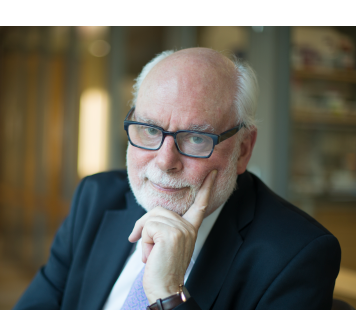


Photo by
Jim Prisching Photography
SIR FRASER STODDART
2016 NOBEL LAUREATE IN CHEMISTRY
Board of Trustees Professor of Chemistry
Department of Chemistry Northwestern University, USA

QAFCO



Photo by
Jim Prisching Photography
Board of Trustees Professor of Chemistry
Department of Chemistry Northwestern University, USA
In March 1967, Stoddart took his leave of the Chemistry Department at Edinburgh with a PhD degree to spend the next three years as a National Research Council of Canada Postdoctoral Fellow at Queen’s University with Professor J. K. N. Jones. No sooner had he arrived in Kingston, Ontario than a communication appeared in the Journal of the American Chemical Society by Charles Pedersen (one of three Nobel Laureates in Chemistry in 1987) describing the synthesis of dibenzo[18]crown-6 in excellent yield as a consequence of the templating action of potassium ions. This seminal event marked the beginning of Fraser’s fascination with chemistry beyond the molecule, which, combined with his interest in templation, has led to the template-directed synthesis, based on molecular recognition and self-assembly processes, of a wide range of mechanically interlocked molecules (e.g., catenanes and rotaxanes), variants of which have found their way into molecular electronic devices, drug delivery systems, and molecular machines. Mechanically interlocked molecules — or MIMs for short – are discussed at length in “The Nature of the Mechanical Bond: From Molecules to Machines” written in conjuction with ex-graduate student, Carson Bruns, and published by Wiley in November 2016.
Fraser met Edinburgh graduate Norma Scholan (B.Sc. chemist/Ph.D. biochemist) in 1966 while he was a postgraduate student in the Chemistry Department at Edinburgh and they started their married lives in Canada in 1968. In 1970, they returned to the United Kingdom so that Fraser could take up an Imperial Chemical Industries (ICI) Fellowship at Sheffield University where he worked briefly with Professor W. D. Ollis before being appointed as a Lecturer in Chemistry. After spending a three-year sabbatical (1978–1981) at the ICI Corporate Laboratory in Runcorn, he returned to Sheffield where he was promoted to a Readership in Chemistry. It was during his time at ICI that Stoddart developed his long-standing interest in bipyridinium units (constituents of the ICI herbicides Diquat and Paraquat) as redox-addressable building blocks for incorporation into bistable catenanes and rotaxanes. On 23 May 2013, Fraser published his 1,000th scientific paper; the total count has now reached 1,111. He has trained more than 400 graduate and postdoctoral students of which more than 90 have subsequently embarked on successful independent academic careers.
In 1990, he took up the Chair of Organic Chemistry at Birmingham University where he was Head of the School of Chemistry (1993–97) before moving to the University of California, Los Angeles (UCLA) as the Saul Winstein Professor of Chemistry in 1997. In 2002, Fraser became the Director of the California NanoSystems Institute (CNSI) and assumed the Fred Kavli Chair of NanoSystems Sciences. He joined the faculty at Northwestern University in 2008 as a Board of Trustees Professor of Chemistry and Director of the Center for the Chemistry of Integrated Systems (CCIS).
Stoddart was appointed by Her Majesty Queen Elizabeth II as a Knight Bachelor in her 2007 New Year’s Honours List for services to chemistry and molecular nanotechnology. In this same year, he won the King Faisal International Prize in Science. In 2010, he was the recipient of a Royal Medal, granted by Her Majesty Queen Elizabeth II and presented by Prince Philip, Duke of Edinburgh. He was awarded the Nobel Prize in Chemistry in 2016 for his design and synthesis of molecular machines.

QAFCO

